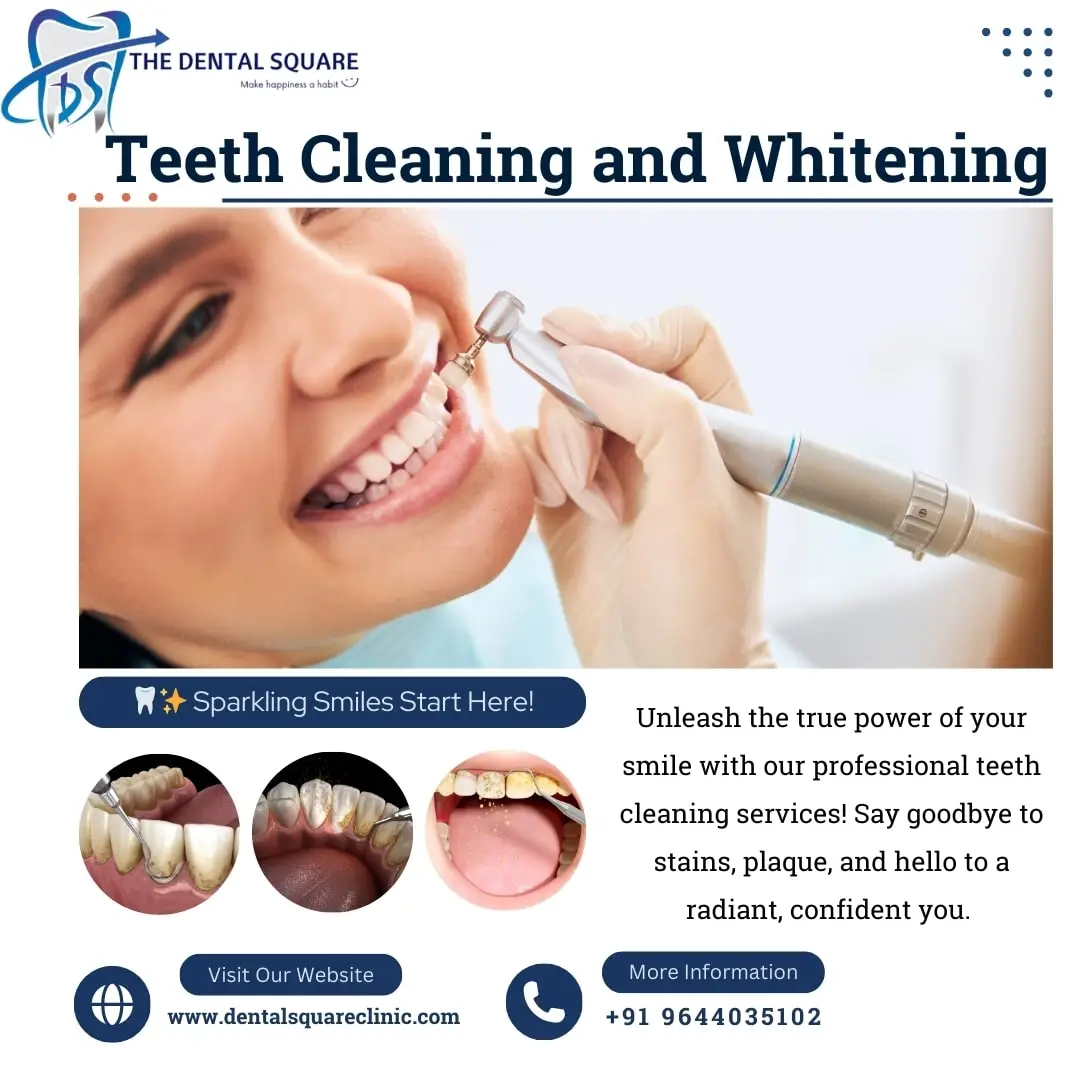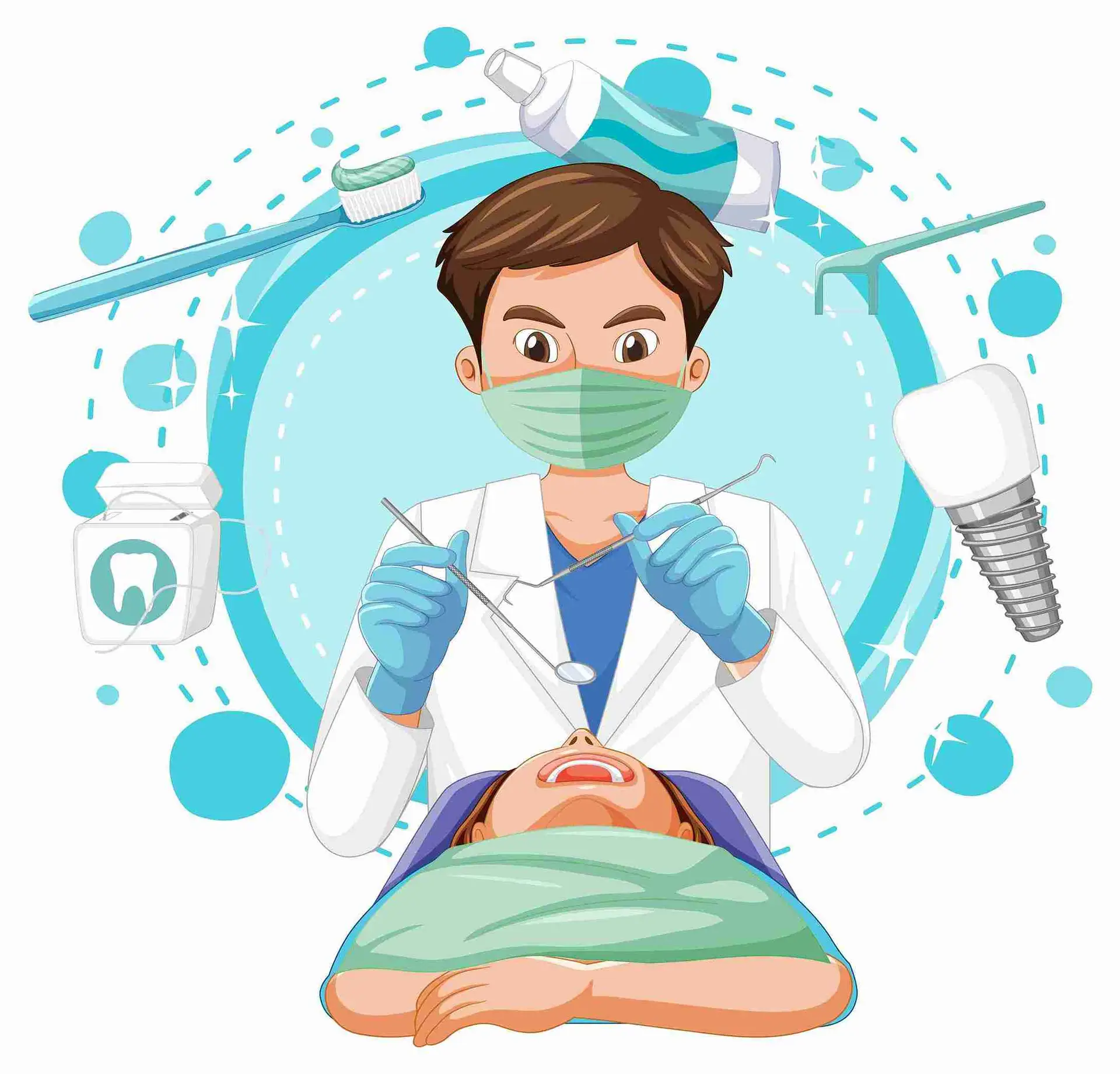
A bright, white smile is often associated with good health and confidence. Teeth cleaning and whitening are two essential dental procedures that help maintain oral hygiene and enhance the appearance of your teeth. While teeth cleaning focuses on removing plaque, tartar, and stains to prevent oral diseases, teeth whitening aims to lighten the color of your teeth and eliminate discoloration. In this article, we will explore what teeth cleaning and whitening are, why they are necessary, the different types of procedures available, and the steps involved in the treatment process. Get Teeth Cleaning and Whitening in Gwalior
What is Teeth Cleaning?
Teeth cleaning, also known as prophylaxis, is a professional dental procedure that involves the removal of plaque, tartar, and stains from the teeth. Plaque is a sticky film of bacteria that forms on the teeth and gums, leading to tooth decay and gum disease if not removed regularly. Tartar, or calculus, is hardened plaque that can only be removed by a dental professional.
Teeth cleaning is a preventive measure that helps maintain oral health by preventing cavities, gingivitis, and periodontal disease. Regular professional cleanings, along with good oral hygiene practices at home, are essential for keeping your teeth and gums healthy.

The Need for Teeth Cleaning
Teeth cleaning is crucial for several reasons:
- Prevention of Cavities: Plaque buildup on the teeth can lead to the formation of cavities, which are small holes in the teeth caused by bacterial acids. Regular cleaning removes plaque, reducing the risk of cavities.
- Prevention of Gum Disease: Plaque and tartar buildup along the gumline can cause gum inflammation, leading to gingivitis (early-stage gum disease). If left untreated, gingivitis can progress to periodontitis, a more severe form of gum disease that can result in tooth loss. Professional cleaning helps prevent gum disease by removing plaque and tartar.
- Fresher Breath: Bad breath, or halitosis, can be caused by poor oral hygiene and plaque buildup. Teeth cleaning removes the bacteria and food particles that contribute to bad breath, leaving your mouth feeling fresh.
- Removal of Stains: Certain foods, drinks, and lifestyle habits like smoking can stain the teeth over time. Professional cleaning helps remove surface stains, restoring the natural color of your teeth.
- Overall Health Benefits: Poor oral health has been linked to several systemic health issues, including heart disease, diabetes, and respiratory infections. Regular teeth cleaning reduces the risk of these conditions by promoting good oral hygiene.
Types of Teeth Cleaning
There are several types of teeth cleaning procedures, each designed to address specific dental needs:
- Prophylaxis Cleaning: This is the standard cleaning procedure that most patients undergo during their regular dental check-ups. Prophylaxis cleaning involves removing plaque, tartar, and surface stains from the teeth. It is suitable for individuals with generally good oral health and is typically recommended every six months.
- Scaling and Root Planing: Also known as deep cleaning, this procedure is performed on patients with gum disease. Scaling involves removing plaque and tartar from below the gumline, while root planing smooths the root surfaces to prevent further bacterial buildup. This procedure may require multiple visits and is essential for treating periodontal disease.
- Gross Debridement: This type of cleaning is performed on patients with a significant buildup of plaque and tartar. Gross debridement involves the removal of heavy tartar deposits from the teeth and is usually followed by a more thorough cleaning. It is typically recommended for patients who have not had a dental cleaning in an extended period.
- Periodontal Maintenance Cleaning: After completing periodontal treatment, patients with a history of gum disease require regular maintenance cleanings to prevent recurrence. Periodontal maintenance cleanings are more frequent and thorough than standard cleanings, focusing on maintaining the health of the gums and supporting structures.
What is Teeth Whitening?
Teeth whitening is a cosmetic dental procedure that aims to lighten the color of the teeth and eliminate stains or discoloration. Over time, teeth can become stained or discolored due to various factors, including aging, consumption of staining foods and drinks (such as coffee, tea, and red wine), smoking, and certain medications.
Teeth whitening treatments work by using bleaching agents, typically hydrogen peroxide or carbamide peroxide, to break down the stains on the enamel and dentin layers of the teeth. The result is a brighter, whiter smile that can significantly enhance a person’s appearance and confidence.
The Need for Teeth Whitening
Teeth whitening is sought after for several reasons:
- Improved Aesthetics: A bright, white smile is often perceived as a sign of youth and vitality. Teeth whitening enhances the appearance of your smile, making you look and feel more confident.
- Reversal of Discoloration: Over time, teeth can become discolored due to various factors. Teeth whitening effectively reverses this discoloration, restoring the natural whiteness of your teeth.
- Boosted Self-Confidence: A whiter smile can boost self-esteem and confidence, especially in social and professional situations. Many people seek teeth whitening to feel better about their appearance.
- Special Occasions: Teeth whitening is a popular choice before special events such as weddings, job interviews, or reunions, where looking your best is essential.
Types of Teeth Whitening
There are several teeth whitening options available, ranging from in-office treatments to at-home solutions:
- In-Office Teeth Whitening: This professional whitening treatment is performed by a dentist in a dental office. In-office whitening uses a high-concentration bleaching gel applied directly to the teeth. The dentist may use a special light or laser to enhance the whitening process. In-office whitening provides immediate and dramatic results, often lightening the teeth by several shades in a single visit.
- Take-Home Whitening Kits: These kits are provided by the dentist and include custom-made trays that fit snugly over the teeth. The trays are filled with a lower-concentration bleaching gel and worn for a specified period, usually for several hours each day or overnight. Take-home kits offer gradual whitening results over a few weeks and are a convenient option for those who prefer to whiten their teeth at home.
- Over-the-Counter Whitening Products: There are various over-the-counter whitening products available, including whitening strips, gels, toothpaste, and rinses. While these products can lighten teeth, they are generally less effective than professional treatments and may take longer to achieve noticeable results.
- Whitening Toothpaste and Rinses: Whitening toothpaste and rinses contain mild abrasives and small amounts of bleaching agents to help remove surface stains. While they can maintain the results of professional whitening, they are not as effective at providing significant whitening on their own.
The Teeth Cleaning and Whitening Treatment Process
The process of teeth cleaning and whitening involves several steps, each designed to ensure optimal results and patient satisfaction:
- Initial Consultation: Before undergoing teeth cleaning or whitening, a consultation with a dentist is essential. The dentist will assess the patient’s oral health, discuss their goals and expectations, and recommend the most suitable treatment options.
- Teeth Cleaning Procedure: If the patient requires teeth cleaning, this will be the first step in the process. The dentist or dental hygienist will use specialized tools to remove plaque, tartar, and stains from the teeth. The cleaning may include scaling, root planing, and polishing to ensure the teeth are thoroughly cleaned and prepared for whitening.
- Teeth Whitening Procedure: If whitening is desired, the dentist will proceed with the chosen whitening method. For in-office treatments, a protective barrier is applied to the gums, and the bleaching gel is applied to the teeth. The gel may be activated with a special light or laser to enhance the whitening process. For take-home kits, the dentist will provide instructions on how to use the trays and gel at home.
- Post-Treatment Care: After teeth cleaning and whitening, patients should follow the dentist’s recommendations for maintaining their results. This may include avoiding staining foods and drinks, practicing good oral hygiene, and using touch-up whitening products as needed.
Dr. Sudhanshu Kushwah
For those in Gwalior seeking expert care in teeth cleaning and whitening, Dr. Sudhanshu Kushwah at The Dental Square Clinic is a leading specialist. With extensive experience in both preventive and cosmetic dentistry, Dr. Kushwah ensures that each patient receives personalized and effective treatment tailored to their needs. His clinic is equipped with state-of-the-art technology, providing a comfortable and efficient environment for all dental procedures, including teeth cleaning and whitening.
Teeth cleaning and whitening are essential procedures for maintaining oral health and achieving a bright, beautiful smile. With the expertise of a skilled professional like Dr. Kushwah, patients can enjoy optimal results and long-lasting benefits.




